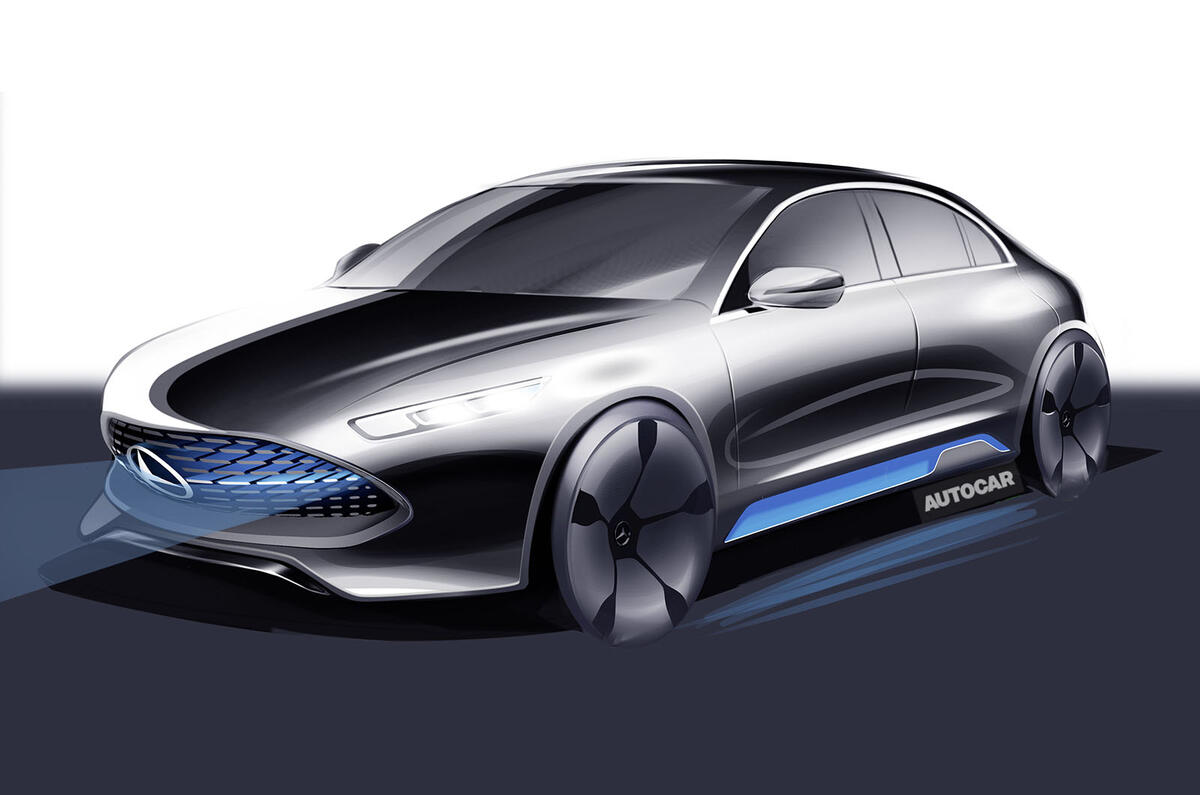Mercedes-Benz has accelerated plans for a range of new electric vehicles.
The move follows a long-awaited announcement by the German government that it will begin offering sales subsidies on all EVs priced at less than €60,000 (£47,300) as part of a €1.2 billion (£950 million) electric car purchase incentive scheme.
Mercedes Generation EQ concept revealed at Paris motor show
The plans have been orchestrated by Mercedes-Benz’s outgoing R&D boss, Thomas Weber, and call for four new electric models to join the Mercedes line-up by the end of 2020.
Two electric saloons and two SUVs are expected. Each is set to share the basic elements of a more conventionally powered sibling, including so-called hard points such the windscreen and roof structure. However, there will be unique design touches to make them instantly recognisable as zeroemissions vehicles, according to insiders privy to the proposals for the four models.
The new electric car line-up is aimed at pitching Mercedes into direct competition with Tesla Motors, which has led the electric car push and had solid levels of sales growth since the Model S executive saloon began production in 2012. It also comes in response to recent moves by key rival Audi, which has already announced that it will begin offering a production version of its e-tron quattro concept in 2018 in the first stage of a similar electric car offensive.
A heavy shroud of secrecy surrounds the upcoming electric-powered Mercedes models, although recent comments by Weber suggest the saloons will be based around the Mercedes-Benz C-Class and Mercedes-Benz S-Class and the SUVs will share common links with the Mercedes-Benz GLA and Mercedes-Benz GLC.
Mercedes has intensively studied the idea of bringing stand-alone electric cars with uniquely engineered bodies to showrooms. However, it says the high cost of development, components and production makes it prohibitive at volumes below 50,000 per year during the first generation, even for highpriced models. Its conclusion is backed up by Tesla’s inability to turn a profit since the Model S, which currently has a base price of £51,900 in the UK, first went into production.
The GLA-based model is set to adopt a modified version of the MFA platform currently used beneath Mercedes’ first dedicated electric car, the B-Class Electric Drive. The C-Class, S-Class and GLC-based electric cars will use a newly developed variant of Mercedes’ MRA (Modular Rear Architecture) platform conceived specifically for EV applications and known to insiders as the MEA (Modular Electric Architecture).
The first recipient of this new platform will be the GLC Fuel Cell, due next year. The new hydrogen-powered model, which will be offered to customers on either a limited lease or outright purchase scheme, is described by Weber as a forerunner to Mercedes’ new EV line-up. As well as housing batteries within the floor, its version of the MEA platform features tanks to house the hydrogen.






Join the debate
Add your comment
...
Vertigo wrote: They also have
Range is actually triple the range.
There is one variant of Model S that was rated 300 miles in EPA test other EVs are rated for less then 100 miles. :)
For the 2020 hopefully, CCS will have 150kWh ready.
Also read Consumer Reports
winniethewoo wrote: There is
Slightly odd comment given the fact that all other car companies produce huge volumes of advertisements and Tesla don't do any at all.
Tesla's Supercharger network % is tiny
www.zap-map.com/statistics/#location
winniethewoo wrote: You can
That is because each night You charge Your car for up to 300 miles (newest EPA rating for one of S models!).
When You have even 200 miles as a starting charge, You can drive quite a distance without recharging it again. That's why Tesla put Superchargers every 170 miles in USA.
Of course that is solution only for long range driving. When You for example stop at some hotel You would like to have some faster charging then 220v too. That is destination charging for You. This will come this year to europe in general. 50-60kWh charging for places where You leave Your car for hour or more (hotels, restaurants, shopping malls, etc.)
But even then You need less of them as You charge faster and thus more cars can be served by smaller number of chargers.
And that daily 300 miles range. 5 minutes refill & payment at gas station is irrelevant when You do not need to stop to recharge at all for most of the trips/days!